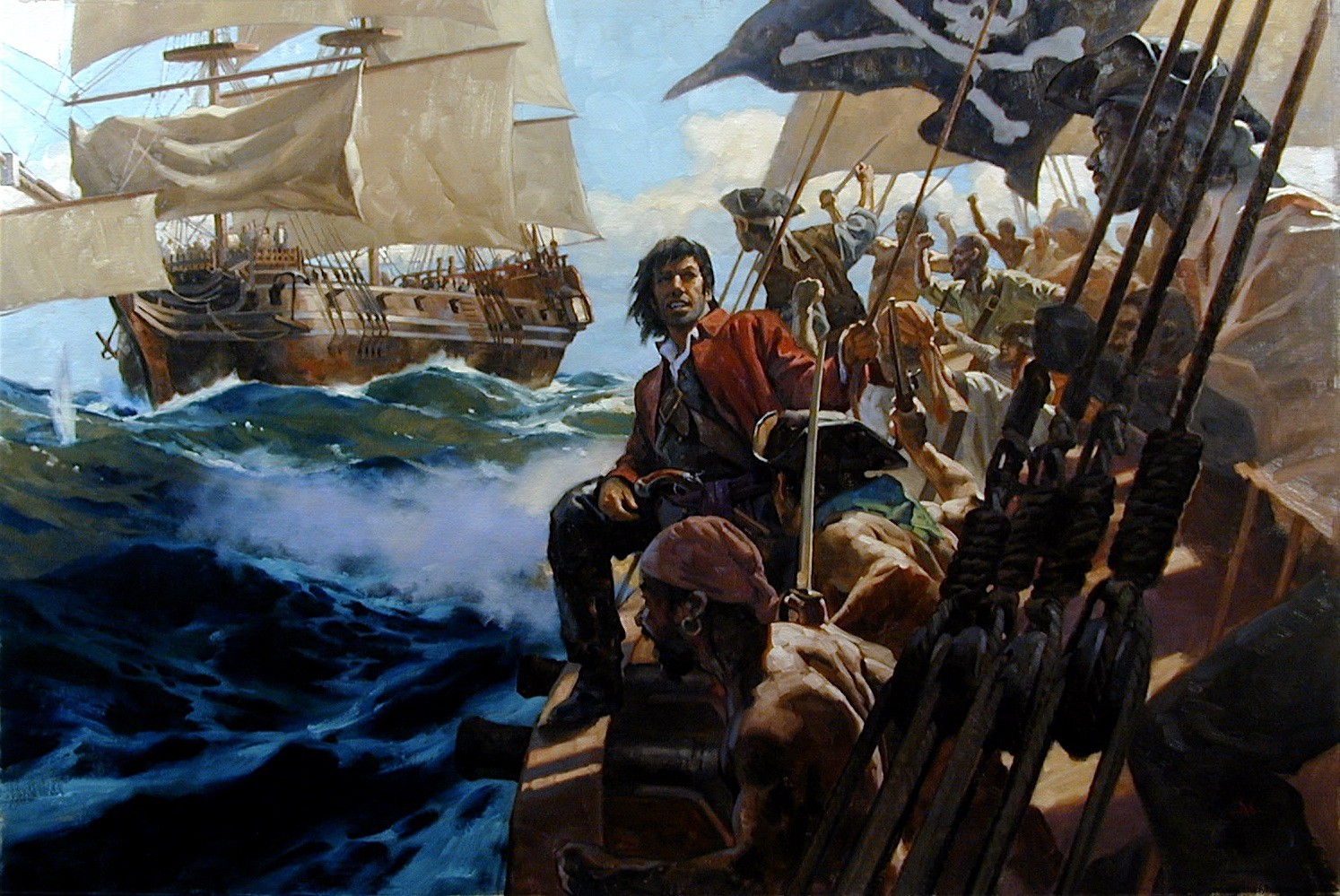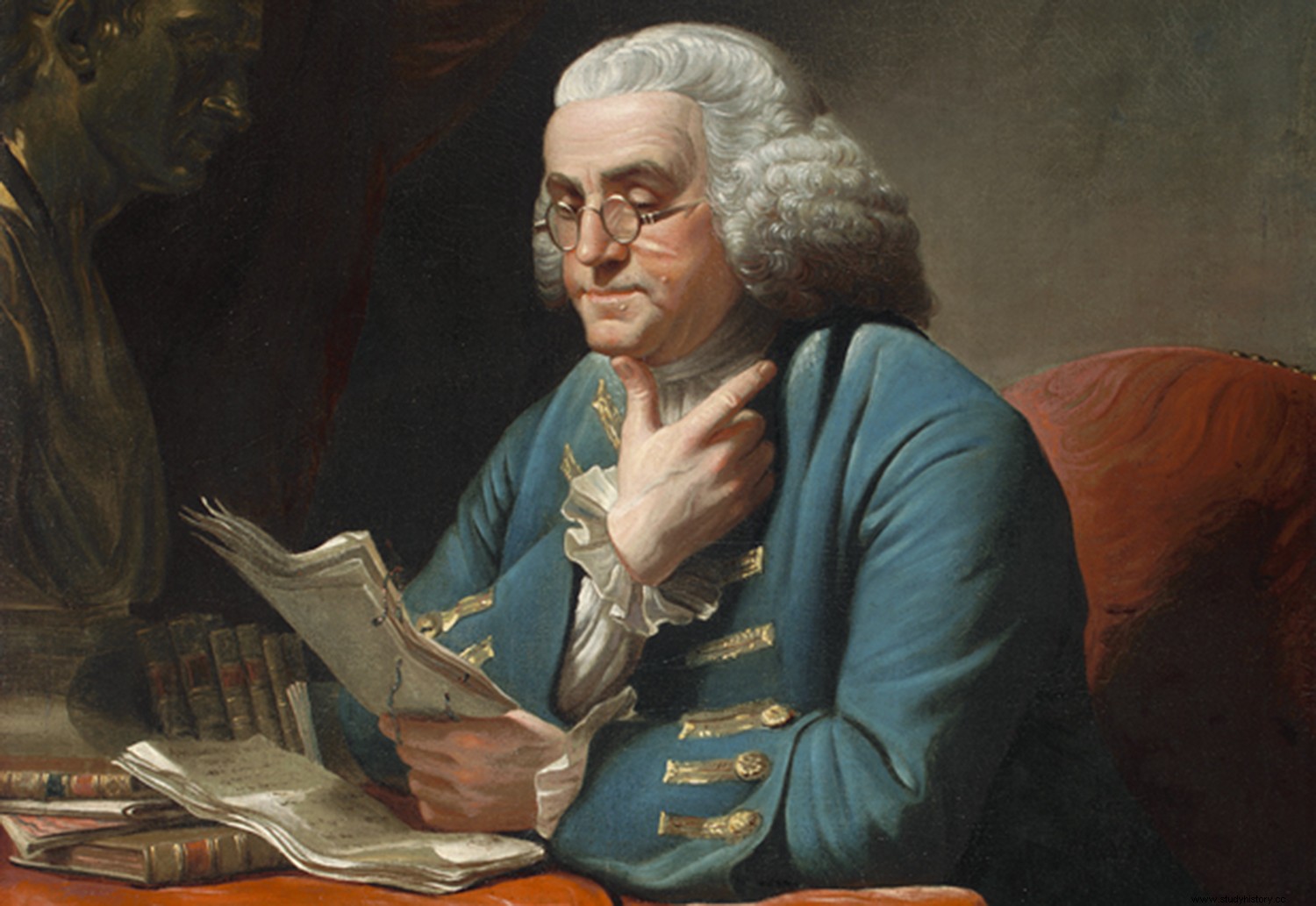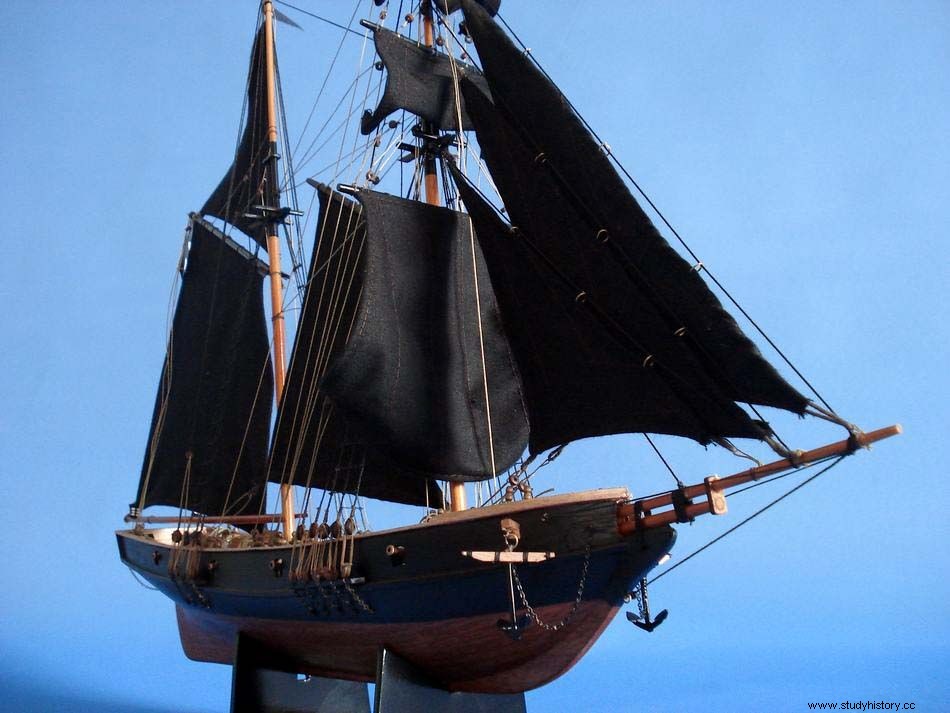The men and ships that were called corsairs -for some criminals and for others national heroes-, traveled under the protection of a marque letter , a document in which a king or a government gave them authorization to attack ships and enclaves of enemy powers. In this sense, it was very common, in a Colonial America dominated by Castilians and Portuguese, that the crowns of France, England and Holland, even being allies of some of the former, authorized various ships and captains to attack the possessions of the peninsular powers. . These attacks, although on many occasions they reported economic benefits, their only objective was not to steal, but also to hinder the commercial activities that were carried out in the enemy territories; as well as stopping the transport of wealth to old Europe and, in this way, complicating the maintenance of wars in Europe, for example. They were corsairs men like Sir Francis Drake , Walter Raleigh or Henry Morgan, and also the private fleet that, under the direct orders of one of the Founding Fathers of the United States, Benjamin Franklin , operated during the War of Independence.

The War of Independence of the United States was a war that pitted, between 1775 and 1783, the original Thirteen British Colonies in North America against Great Britain. Although it ended with the British defeat at the Battle of Yorktown and the signing of the Treaty of Paris, which recognized the independence of the Thirteen Colonies, the first years of the war were unfavorable for the colonists –George Washington he even said:« we have recruited an army of generals, they do not obey anyone «-. Knowing that before the powerful British fleet and its organized and disciplined regular army, they had a very difficult time, Benjamin Franklin traveled to France in search of support to continue the campaign against the British troops. In addition to getting the French government to join his cause -Spain also contributed troops, money and weapons-, he learned of the terrible conditions in which the hundreds of compatriots held in British prisons were, especially sailors captured in high seas or ports loyal to the Crown just because they are North American. As if that were not enough, the British decided that all Americans captured, whether on land or at sea, would not be considered enemy soldiers, but rebellious British subjects and tried for treason against the Crown. This semantic consideration implied that the North American revolutionaries would not be part of the prisoner exchanges, a common practice between soldiers taken prisoner in the context of a war between two belligerent states. That was the straw that broke the camel's back and Benjamin Franklin prepared a plan to reverse that situation:capture British soldiers and civilians to force Great Britain to negotiate the exchange of prisoners. And how did he do it? With a private fleet of privateers .

The truth is that hunger and the desire to eat came together, because, while Franklin was in France, he arrived at the French coast Luke Ryan , an Irish smuggler on the run from the Royal Navy . Captain Ryan and his crew had been smuggling for years, until they were intercepted by the British and had to flee. Since secrets don't last long in port taverns, he found out that the American ambassador was recruiting ships and showed up to offer the Black Prince . Although reluctantly, because Franklin did not trust the Irishman very much, in 1779 he granted him a letter of marque to attack British coastal towns, ships and ports. In addition, it was a very beneficial letter of marque for the corsair, more than usual, since it allowed him to keep all the loot he obtained, when it was usual for him to keep a part of the loot. Franklin only wanted captured English subjects , with whom he could balance the scales and speak as equals to the British.

Letter of marque granted by Franklin to the Black Prince
With a flotilla of three ships (Black Prince , Black Princess and Fear not ) and Captain Luke Ryan at the head, the Irish corsairs wreaked havoc:they captured or destroyed more than 100 British merchant ships and even some warships, looted dozens of English and Scottish towns, Great Britain had to spend several warships in their capture -resources that the Royal Navy would have come in handy in North American waters- and even influenced the economy, as merchant ships refused to sail and marine insurance premiums skyrocketed.

Black Prince
On April 17, 1781, the adventures of Franklin's private fleet of corsairs ended when Luke Ryan was captured off the Scottish coast… but the work was already done. Although Franklin's small fleet failed to capture as many prisoners as he wanted - it is estimated that just over 3,000 British subjects were taken - and therefore failed to get Britain to sit down to negotiate the exchange, the privateers kept resources busy. of the British who would otherwise have been destined to put down the rebellion.
Sources:Luke Ryan, Benjamin Franklin hires a pirate
